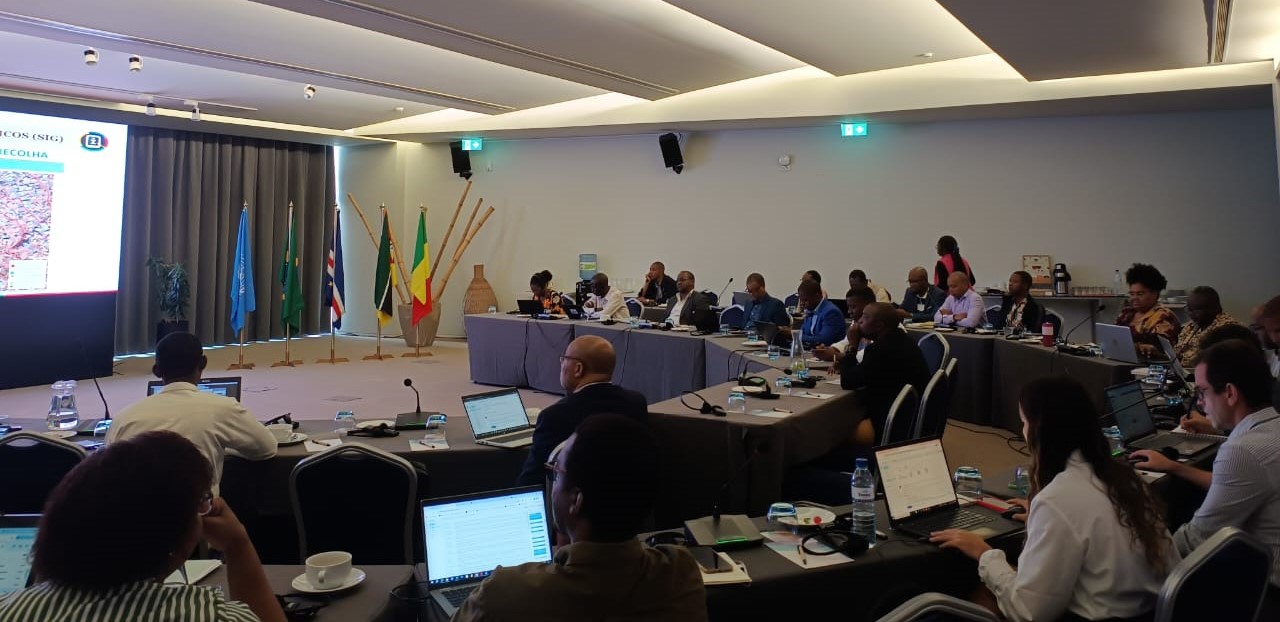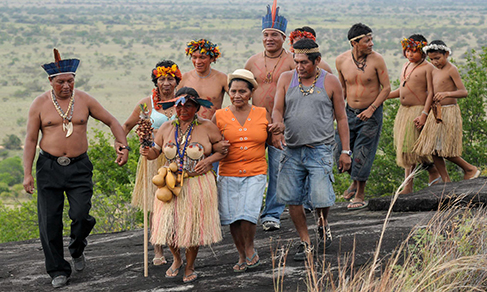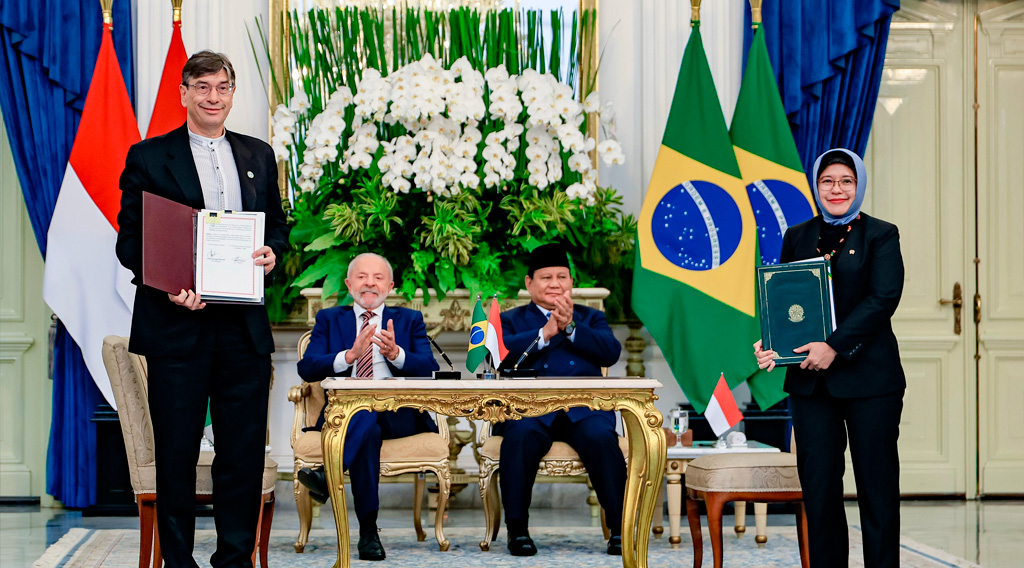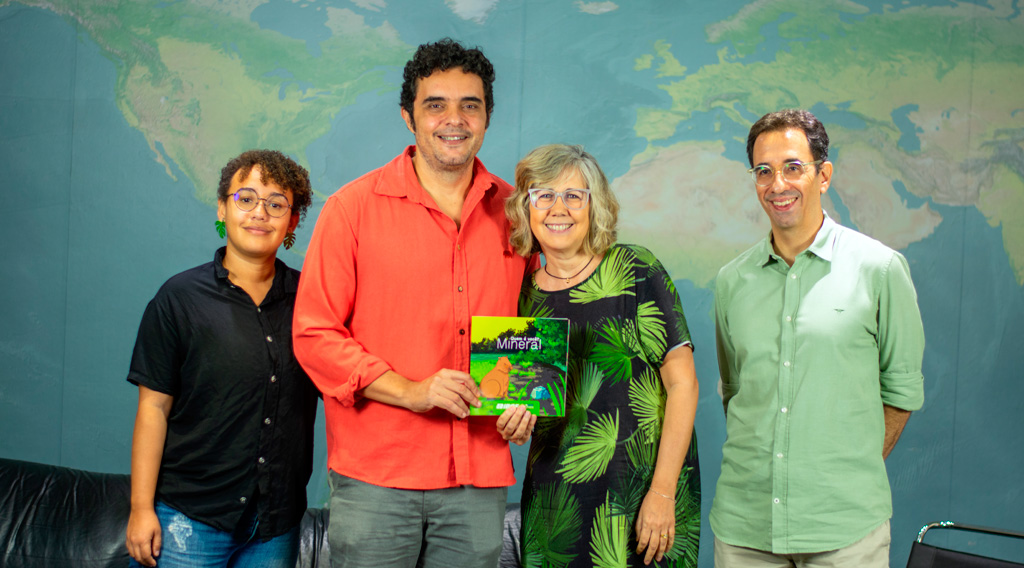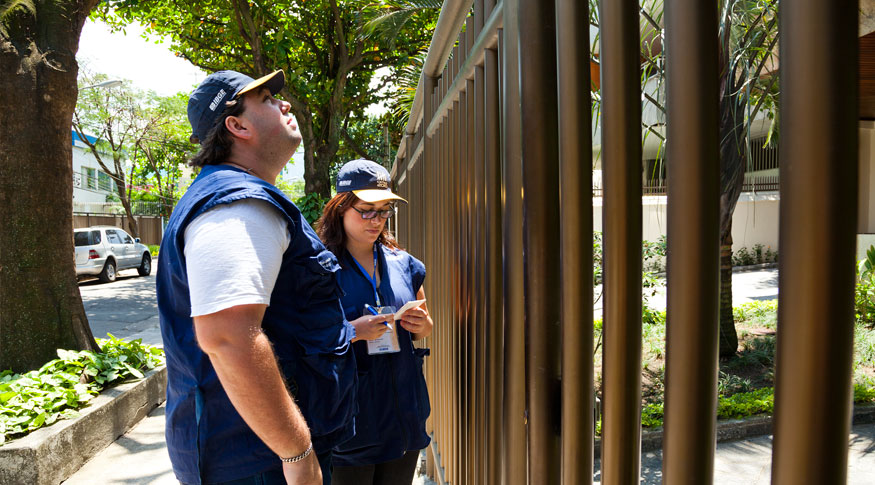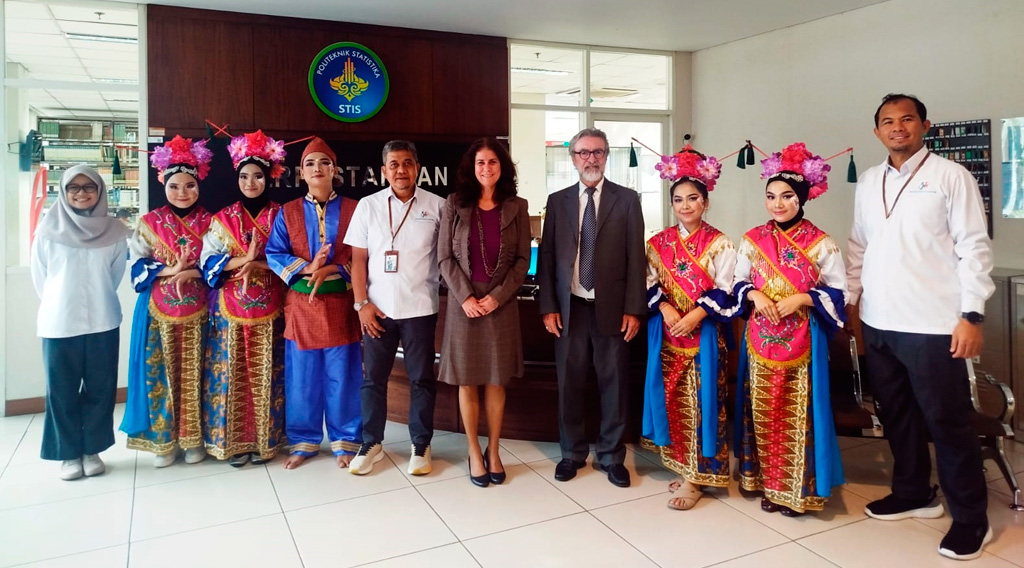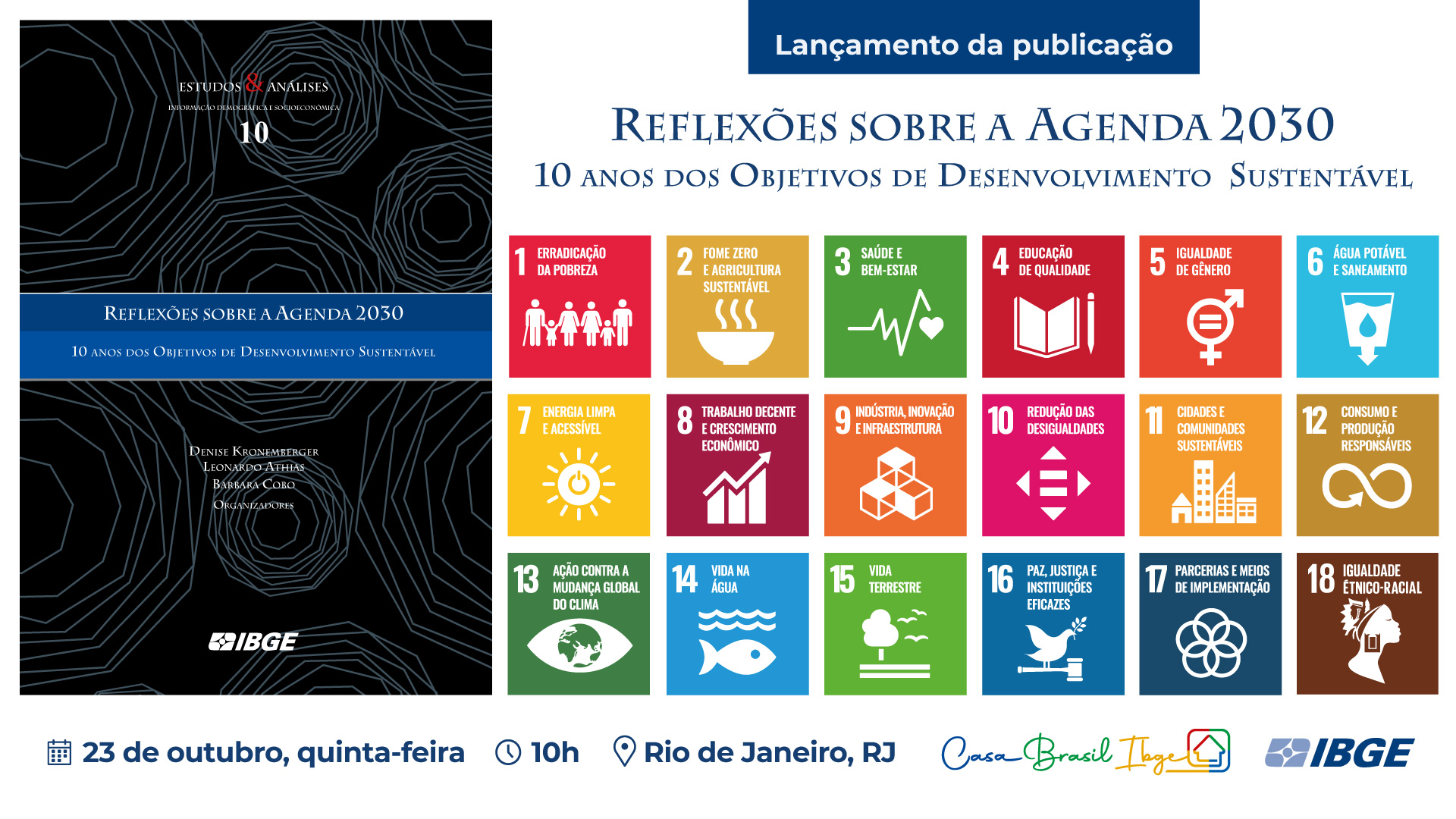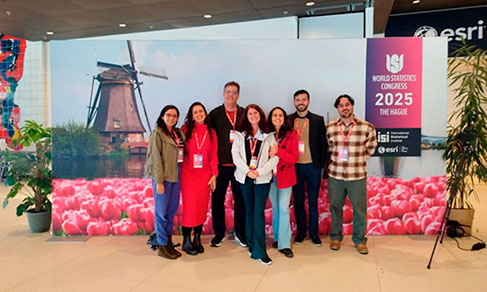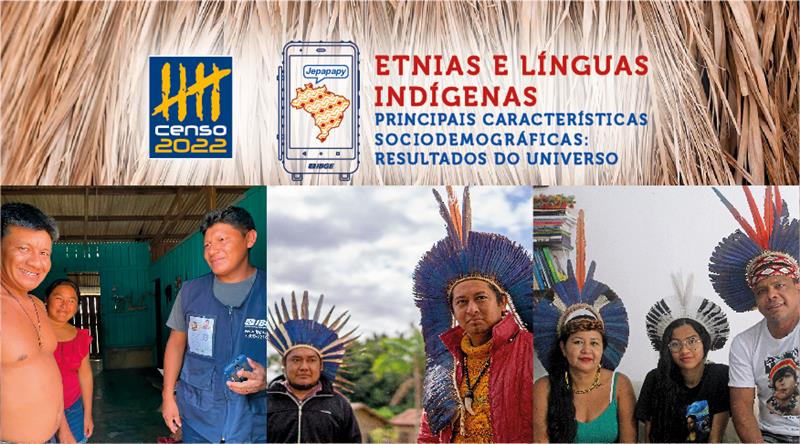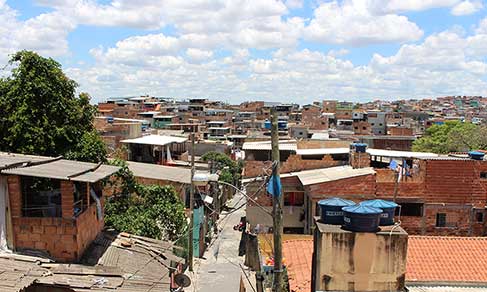2022 Census
Brazil has 1.3 million quilombolas in 1,696 municipalities
July 27, 2023 10h00 AM | Last Updated: July 30, 2023 02h23 PM
Highlights
- The Northeast Region is the home of 69.19% of the quilombolas in Brazil. Bahia concentrates 29.90% of this population, followed by Maranhão, with 20.26%. The two states account, together, for 50.16% of the quilombola population in Brazil.
- The 2022 Census found 473,970 housing units with at least one quilombola resident.
- Among the 5,568 municipalities in Brazil, 1,696 had quilombola residents. Senhor do Bonfim/BA had the biggest number of quilombolas (15,999), followed by Salvador/BA (15,897), Alcântara/MA (15,616) and Januária/MG (15,000).
- A total of 494 quilombola territories were officially found in Brazil, being inhabited by 167,202 persons. So, only 12.6% of the quilombola population lived in officially recognized territories. Among those, Alcântara/MA had the biggest resident population (9,344), followed by Alto Itacuruçá, Baixo Itacuruçá, Bom, Remédio/PA (5638) and Lagoas/PI (5,042).
- In the Legal Amazon, the 2022 Census found 426,449 quilombolas, which meant 1.6% of the population in this area and almost one third (32.1%) of the quilombolas in the country.

The quilombola population in the country amounts to 1,32 of the total residents. The data come from the 2022 Census, which investigated for the first time this group that is part of the traditional peoples and communities acknowledged by the 1988 Constitution. The number of housing units with at least one resident quilombola amounted to 473,970, in a total of 1,696 municipalities in Brazil. The Northeast concentrated 68.19% (or 90,.415 persons) of the total quilombolas in the country.
The Census also showed that the officially established quilombola territories were inhabited by 203,518 persons, with 167,202 quilombolas, or 12.6% of the total number of quilombolas in the country. Only 4.3% of the quilombola population lives in territories already made official after a process of land regularization.
“With this release, the IBGE fulfills a historic demand of our society, governmental agencies and social movements. Getting to know the number of wuilombolas and how their distribution over the country, at municipal level, will be a way to guide public policies in housing, employment, labor, income generation and land regularization,” says Marta Antunes, whoc is in charge of the project Traditional People and Communities.
“It is important to point out that all this information results from a cooperative project, in which the quilombola population participated together with the IBGE since day one, in the mapping of communities, the definition of questionnaires, organization for data collection planning, in the training of enumerators and, now, in the release of results,” adds Fernando Damasco, Manager of Traditional Peoples and Protected Areas.

The publication 2022 Census - Quilombolas: First results of the universe presents information on the country, Federation Units, Municipalities, official Quilombola Territories and the Legal Amazon, disaggregated by official delimited areas on July 31, 2022. The data are represented as tables, cartograms and a map on the 1:5,000,000 scale, besides vector geospatial files.
Bahia and Maranhão concentrate half of (50.16%) the quilombola population in the country
Bahia is the Federation Unit with the biggest number of quilombolas: 397,059 persons, or 29.90% of the quilombola population enumerated. Then comes Maranhão, with 20.26% of this population (or 269,074 quilombolas). Together, the two states concentrate half of (50.16%) the quilombola population in the country. They are followed by Minas Gerais (135,310), Pará (135,033) and Pernambuco (78,827) which, together, gather 26.3% of the quilombola population.
A highlight is the absence of the quilombola population in Acre and Roraima. “In these two states, there is no sign of the quilombola population; therefore, the self-identification was not applied,” Ms. Antunes says.
Maranhão had the highest percentage (3.97%) of quilombolas in the state population, followed by Bahia (2.81%), Amapá (1.71%), Pará (1.66%), Sergipe (1.27%), Alagoas (1.21%).
Quilombolas are present in 1,696 Brazilian municipalities
Of the 5,568 municipalities in Brazil, 1,696 had a quilombola population. Senhor do Bonfim/BA is the city with the biggest absolute number (15,999 quilombolas), followed by Salvador/BA (15,897), Alcântara/MA (15,616) and Januária/MG (15,000).
In relation to the proportion of quilombolas in the total population of the municipality, Alcântara/MA stands out, with 84.6%. Berilo/MG, Cavalcante/GO, Serrano do Maranhão/MA and Bonito/BA, where more than 50% of the population declared to be quilombola, also stood out.
According to Fernando Damasco, the spatial analysis of the quilombola population distribution in the Brazilian territory indicates four axes of spatial concentration. “The first one is formed by the Southeast and Northeast in two main locations: around the são Francisco river watershed up to Pernambuco and in the coastal cities of São Paulo, Rio de Janeiro and Espírito Santo, mainly in the Ribeira Valley, located between São Paulo and Paraná”.
“The second axis is down the Amazon river, encompassing municipalities in Amazonas and along the north channel up to the river mouth, besides municipalities around Belém and Amapá. This axis is projects over Maranhão, mainly around the capital São Luís, and all the north of the state. A third axis is located between the Central West and the North, mainly in the surroundings of Pantanal and on the Guapore watershed. The fourth axis, a significant one, is in the south and southeast of Rio Grande do Sul.”

Average of residents is higher in municipalities with quilombolas
Of the 72.4 million occupied permanent private housing units enumerated in Brazil, 473,970 have at least one wuilombola resident, corresponding to 0.65% of the housing units, same percentage as that of quilombolas in the resident population.
Housing units with at least one quilombola resident have the highest average number of residents (3.17) than the total housing units in the country (2.79). Also, 88.15% of the residents of these housing units are quilombolas. “It is important to point that out because it shows that most residents in housing units with at least one quilombola are quilombolas.”
Only 12.6% of the quilombola population lives in official quilombola territories
A total of 494 Quilombola territories are officially delimited, in 24 states and in the Federal District, the home of 203,518 persons, being 167,202 quilombolas (82.16%) and 36,316 (21.72%) non-quilombolas. So, 12.6% of the quilombolas in Brazil lived in official quilombola territories and 87.4% were out of areas formally delimited and recognized. “These areas have been compiled by the IBGE based on data from INCRA and state and municipal bodies in charge of land regularization,” fernando Damasco explains.
More than half (53.4%) of the quilombola population living in delimited territories were in the Northeast, a total of 89,350 persons. Nevertheless, this number corresponds to only 9.9% of the quilombolas living in this Major Region.
The North Region has 31.3% of its quilombola population living in delimited territories, the biggest proportion among the five Major Regions. That amounts to 52,012 persons, or 31.1% of the total number of quilombolas living in official territories in the country.
The states with the highest proportions of quilombolas in delimited territories are Amazonas (45.43%), Sergipe (45.24%) and Mato Grosso do Sul (44.97%). The lowest percentages are in Alagoas (1.83%), Minas Gerais (3.38%) and Bahia (5.23%).
The states with most non-quilombolas in officially delimited territories are Alagoas (1.83%), Minas Gerais (3.38%) and Bahia (5.23%). The lowest percentages are found in Piauí (3.50%), Rondônia (4.33%) and Rio Grande do Norte (5.17%).

Of the 1,696 municipalities with quilombolas, only 326 have delimited territories
In 326 municipalities there was quilombola population living in official territories. The majority was in Alcântara/MA (9,868 persons), Abaetetuba/PA (7,528 persons) and Oriximiná/PA (4,830 persons).
The officially delimited territory of Alcântara/MA has the biggest quilombola population (9,344 residents), followed by Alto Itacuruçá, Baixo Itacuruçá, Bom Remédio/PA (5,638 residents) and Lagoas/PI (5,042 residents).
On the other hand, in 1,655 municipalities there was quilombola population living out of the officially delimited territories, most residents in Januária/MG, (15,000), Salvador/BA (14,727) and Senhor do Bonfim (13,652).
Only 4.3% of the quilombola population lives in titled territories
The 2022 Census showed that 62,859 persons lived in the 147 titled and officially delimited quilombola territories. Considering those persons, 57,442 (or 91.38%) were quilombolas and 5,417 (8.61%), non quilombolas.
The quilombola population living in titled territories represents only 4.3% of the totsl quilombolas in the country. Thus, 95.67% of this population (or 1,270,360 persons) did not obtain permanent titles to their land in the formal regularization process. The biggest proportions of quilombolas in titled territories were those in Pará (28.09%), Amapá (14.09%) and Goiás (11.61%).
More than 30% of the quilombolas live in municipalities in the Legal Amazon
The municipalities of the Legal Amazon were the home of 426,449 quilombolas, that is, 1.6%of the resident population there and 32.11% of the total quilombolas in the country.
In the Legal Amazon, a total of 80,899 quilombolas in officially delimited Quilombola Territories were enumerated, which represents 48.38% of the national quilombola population living in those areas.
Also, whereas in the Legal Amazon 18.97% of the quilombola population lives in delimited areas, this percentage for the country overall is 12.6%. “That means more advance in the process of land regularization in the Legal Amazon in relation to other parts of the country,” Marta Antunes adds.
More about the survey
The 2022 Census investigated, for the first time, the ethnic-quilombola belonging of persons living in quilombola localities. This survey presents an unprecedented group of basic information on quilombolas living in the country, on occupied permanent private housing units with at least one quilombola resident and, also, on housing units located in officially delimited Quilombola Territories.



